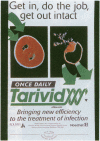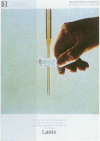Abstract
Advertisers are increasingly using symbols to circumvent logical argument when trying to persuade people (the "targets" of the advertisement) to make choices that are not strictly rational. Symbols can convey covert meanings and awaken or exploit subconscious feelings, such as a desire for power or a fear of doing harm. Some of the ways in which pharmaceutical advertisements use these techniques are examined: advertising by contagion; adding to our worries; polarity of choices; teasers; idealisation. Rational prescribing should be based on logic, but advertisements do not depend on logical arguments for their most powerful effects: the advertisers may subvert us by appealing to our unconscious desires.
Full text
PDF


Images in this article
Selected References
These references are in PubMed. This may not be the complete list of references from this article.
- Avorn J., Chen M., Hartley R. Scientific versus commercial sources of influence on the prescribing behavior of physicians. Am J Med. 1982 Jul;73(1):4–8. doi: 10.1016/0002-9343(82)90911-1. [DOI] [PubMed] [Google Scholar]
- Dunne F. J. Subcortical dementia. BMJ. 1993 Jul 3;307(6895):1–2. doi: 10.1136/bmj.307.6895.1. [DOI] [PMC free article] [PubMed] [Google Scholar]
- Goldman R., Montagne M. Marketing 'mind mechanics': decoding antidepressant drug advertisements. Soc Sci Med. 1986;22(10):1047–1058. doi: 10.1016/0277-9536(86)90205-4. [DOI] [PubMed] [Google Scholar]
- Körner R. J., Reeves D. S., MacGowan A. P. Dangers of oral fluoroquinolone treatment in community acquired upper respiratory tract infections. BMJ. 1994 Jan 15;308(6922):191–192. doi: 10.1136/bmj.308.6922.191. [DOI] [PMC free article] [PubMed] [Google Scholar]
- Lexchin J. Pharmaceutical promotion in Canada: convince them or confuse them. Int J Health Serv. 1987;17(1):77–89. doi: 10.2190/4W1H-E70T-TL9X-VGGC. [DOI] [PubMed] [Google Scholar]
- Scott D. K., Ferner R. E. 'The strategy of desire' and rational prescribing. Br J Clin Pharmacol. 1994 Mar;37(3):217–219. doi: 10.1111/j.1365-2125.1994.tb04265.x. [DOI] [PMC free article] [PubMed] [Google Scholar]








